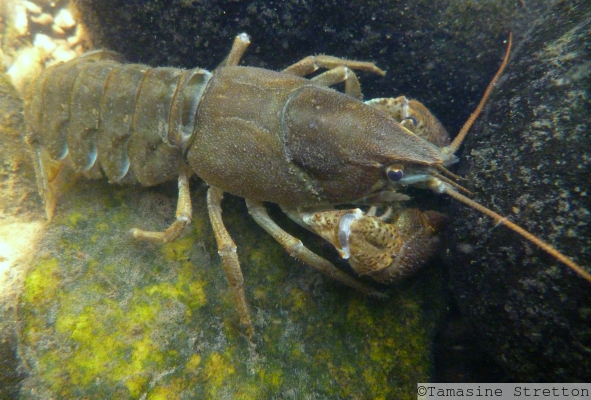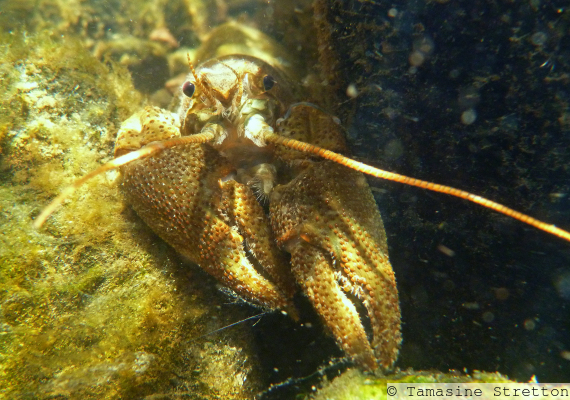White-clawed Crayfish
Austropotamobius pallipes
<
>


 Type
Type Invertebrate: Other
Invertebrate: Other Status
Status Widespread
Widespread Rare
Rare Protected
Protected Endangered
Endangered Season
Season Spring
Spring Summer
Summer Autumn
Autumn Winter
Winter Keep an eye out for predation remains on the towpath or canal edges, as Grey Herons will eat crayfish. Around Berriew is a good place to look.
The UK's only native freshwater crayfish, the White-Clawed Crayfish is very special indeed. However, sadly it's in decline because of the introduction of the non-native North American Signal Crayfish, an invasive species which has brought with it a disease to which the White-Clawed Crayfish has no natural resistance.
Typically found in small and relatively shallow freshwater streams and rivers, where it hides underneath rocks and in small crevices foraging for food, the White-Clawed Crayfish can live up to 12 years.
An omnivorous crustacean, it eats water plants, invertebrates, carrion and dead organic matter. Just as we need calcium to fortify our bones, so too does our native crayfish need mineral-rich water to strengthen its exoskeleton.
We don't know if this rare and hard-to-spot crustacean can be found in the Montgomery Canal, but the waterway's conditions would make it a good fit, and species records would help conservation efforts - so keep your eyes peeled.
The White-clawed crayfish is much smaller than the American Signal Crayfish, growing to just 12cm (as opposed to 18cm for the Signal). Our native is bronze-coloured, with pale cream or rose undersides on its claws (by contrast to the red-clawed Signal).


